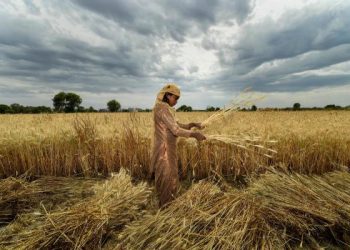Agriculture is one of the largest industries in the United States and has been the backbone of American society for centuries. It not only provides food, fiber, and other essential products but also plays a significant role in the US economy, employing over 21 million people and contributing over $1 trillion to the GDP. As the world population continues to grow, the demand for food and other agricultural products will increase, making the future of agriculture in the US a critical concern.
History of Agriculture in the US
Agriculture has been a fundamental part of American society since the country’s founding. In the early days, farmers were subsistence farmers, growing crops primarily for their own consumption. With the advent of the Industrial Revolution, agriculture became a more commercialized industry, with farmers growing crops for the market.

The widespread use of technology and improved farming practices allowed farmers to become more efficient and productive, leading to increased crop yields and a growing demand for their products.
Current State of Agriculture in the US
Today, agriculture in the US is a modern, technologically advanced industry that is focused on providing high-quality, affordable food and other products to the American people and the world. The industry is diverse, with farmers growing a wide range of crops, including wheat, corn, soybeans, fruits, vegetables, and livestock. The US is one of the largest producers and exporters of agricultural products in the world, accounting for over 14% of the world’s total agricultural output.
Small Family Farms
Despite the growth and modernization of the industry, small family farms remain an important part of the US agricultural landscape. Over 97% of all farms in the US are family-owned operations, and these small farms play a critical role in their local communities and contribute to the economic and social fabric of rural America. These farms are typically smaller in size than larger commercial farms, but they often produce a diverse range of products and provide valuable support to the local economy.
Challenges Facing Agriculture in the US
The agriculture industry in the US faces numerous challenges, including declining profitability, growing demand for food and other products, and increasing competition from other countries. The industry also faces increasing pressure to reduce its environmental impact, as well as to provide safe, nutritious, and affordable food to consumers.
In addition, the industry must also adapt to changing consumer preferences, as well as to new technologies and innovations that are driving changes in the way that food is grown, processed, and marketed.
Opportunities for Agriculture in the US
Despite the challenges, the agriculture industry in the US also faces numerous opportunities for growth and innovation. The growing global population and the increasing demand for food and other agricultural products are driving demand for new and improved technologies and farming practices.
The US is well-positioned to take advantage of these opportunities, as it has a long history of innovation and a strong commitment to science and technology. In addition, the US has abundant natural resources, a highly educated and skilled workforce, and a supportive business and regulatory environment that is conducive to innovation and growth.
Agriculture in the U.S.
:max_bytes(150000):strip_icc()/agriculture-de3e8aad59404ff0b692f94ba65f9251.jpg)
Agriculture has been an integral part of the American economy since its inception. From small family farms to large corporate operations, the agricultural industry continues to play a crucial role in providing food and other resources for the country and the world. However, despite its importance, many people are not familiar with the facts about agriculture in the United States.
Here are five key facts about agriculture in the US.
- The US is one the world’s largest producers of agricultural products: The US is one of the largest producers of agricultural products in the world. According to the USDA, the United States produced over $390 billion worth of agricultural products in 2019. This includes a wide range of products, from crops like corn, wheat, and soybeans to livestock products like beef, pork, and poultry.
- Agriculture is a major contributor to the US economy: Agriculture not only provides food and other resources, but it also makes a significant contribution to the US economy. According to the USDA, the agricultural industry employed over 21 million people in 2019 and contributed over $1 trillion to the US economy.
- The US is a major exporter of agricultural products: The US is not only a major producer of agricultural products, but it is also a major exporter. In 2019, the USDA reported that the United States exported over $139 billion worth of agricultural products, making it one of the largest exporters of agricultural products in the world.
- Technology plays a critical role in modern agriculture: Technology has changed the way farmers grow crops and raise livestock. From precision agriculture to biotechnology, technology has helped farmers increase efficiency and productivity while reducing their environmental impact. As technology continues to advance, it will likely play an even greater role in shaping the future of agriculture.
- Small family farms are still a significant part of the US agricultural landscape: Despite the growth of large corporate operations in the agricultural industry, small family farms remain an important part of the US agricultural landscape. According to the USDA, over 97% of all farms in the United States are family-owned operations. These small farms often play a vital role in their local communities and contribute to the economic and social fabric of rural America.
Conclusion:
Agriculture is an essential part of the American economy and plays a critical role in providing food and other resources for the country and the world. From large corporate operations to small family farms, the agricultural industry continues to evolve and adapt to the changing needs of society. As technology advances and the world faces new challenges, agriculture will play a crucial role in ensuring a sustainable and secure future for all.











